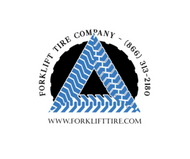23rd Mar 2025
Understanding the Forklift Hydraulic System
The forklift hydraulic system is a sophisticated mechanism that enables operators to lift, transport, and store heavy loads with minimal effort. This system relies on hydraulic pressure, allowing forklifts to handle substantial weights efficiently.
The concept behind forklift hydraulics is based on Pascal's Law, formulated by Blaise Pascal, which states that when liquid is subjected to pressure, the force generated is evenly distributed in all directions. The hydraulic system in a forklift functions through the use of specialized fluids, such as water-based, synthetic, or petroleum-based hydraulic fluids, ensuring smooth and powerful operation.
Like every other component of a forklift, the hydraulic system is prone to wear and tear over time. However, forklift hydraulic failure can be prevented through regular maintenance and proactive inspections. Below are essential steps to keep your forklift hydraulic system in peak condition.
Timely Replacement of Worn-Out Forklift Hydraulic Hoses
During forklift operation, hydraulic hoses experience wear due to factors such as extreme temperatures and continuous pressure fluctuations. Over time, these hoses become brittle, increasing the risk of cracks and leaks in the forklift hydraulic system.
Leaking hoses compromise the hydraulic pressure, leading to inefficiencies in forklift lifting capabilities and potential operational hazards. To prevent hydraulic failure, conduct regular inspections and replace brittle or damaged hoses as soon as they show signs of wear.
Regular Cleaning of Forklift Suction Filters
In a forklift hydraulic system, suction filters play a crucial role in removing contaminants from hydraulic fluid. These filters prevent dirt and debris from clogging the hydraulic channels, ensuring smooth fluid circulation.
However, if suction filters become clogged, the hydraulic fluid flow is restricted, reducing the forklift’s lifting power and overall efficiency. Routine cleaning and timely replacement of suction filters help maintain optimal performance and prevent unexpected forklift hydraulic malfunctions.
Conduct Frequent Forklift Drift Tests and Maintenance
Mast drifts occur when the forklift mast experiences an unintended shift while lifting a load. This can pose significant safety risks to both operators and pedestrians, increasing the likelihood of accidents caused by falling loads.
Common causes of forklift mast drifts include:
- Faulty oil control valves
- Insufficient hydraulic pressure
- Damaged hydraulic cylinders or mast components
To prevent forklift hydraulic failures, schedule regular drift tests to assess mast stability and identify potential issues before they escalate. A well-maintained forklift hydraulic system ensures smoother operations, increased safety, and reduced downtime.
Summary: Preventing Forklift Hydraulic System Failures
A malfunctioning forklift hydraulic system can lead to severe safety hazards and decreased productivity. Taking a proactive approach to forklift maintenance minimizes the risk of costly hydraulic failures. Here are key steps to ensure hydraulic system longevity:
- Clean and maintain suction filters to prevent clogging and restricted fluid flow.
- Inspect and replace worn-out hydraulic hoses to avoid fluid leaks and pressure loss.
- Conduct frequent drift tests to ensure the forklift mast remains stable and secure during lifting operations.
By following these maintenance practices, you can enhance forklift performance, reduce repair costs, and promote workplace safety.
Forklift Tire Company is one of the largest suppliers of forklift tires in the USA. We are happy to help you find the right tires for your forklift truck. Visit our online store ForkliftTire.com for great discounts, or email us at sales@forklifttire.com—our customer service team is always ready to assist you.






